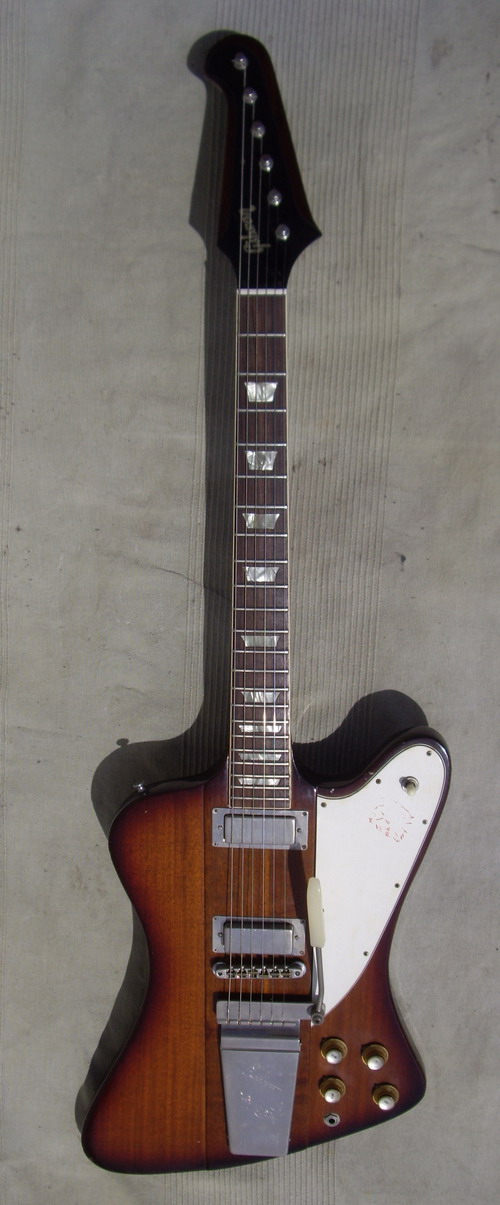

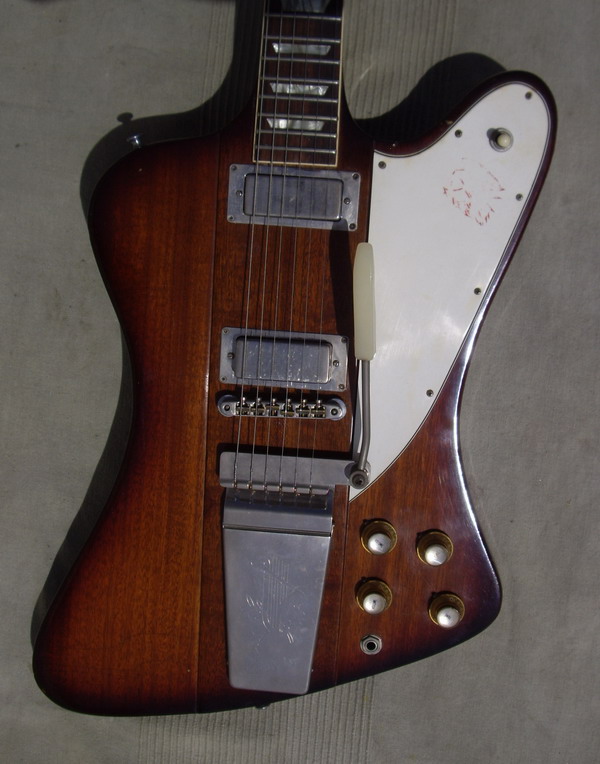
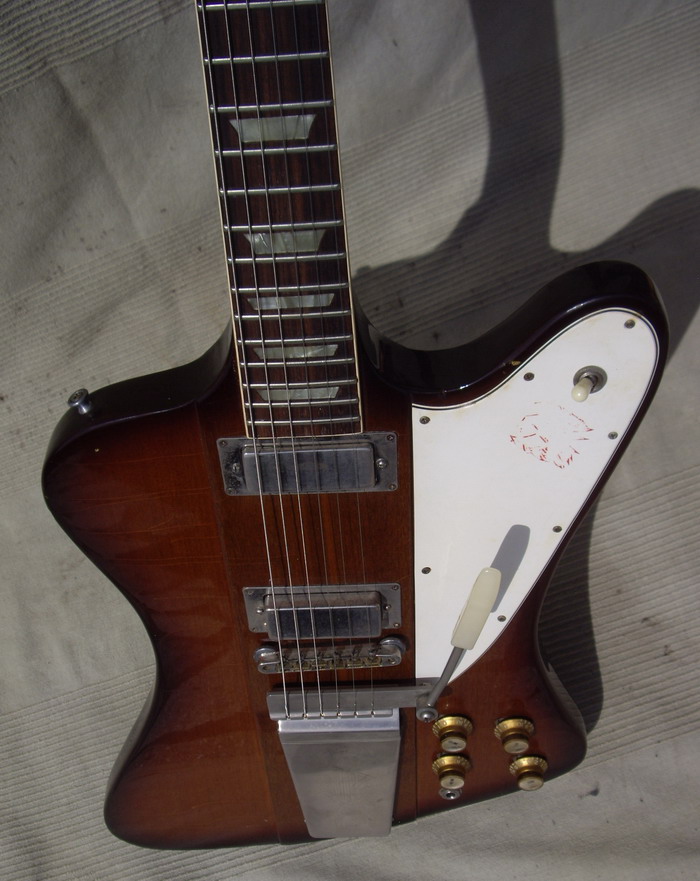
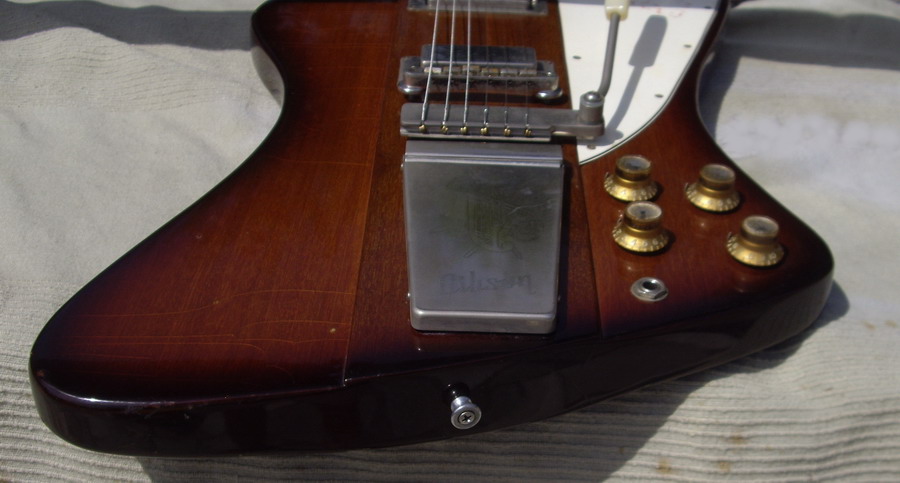
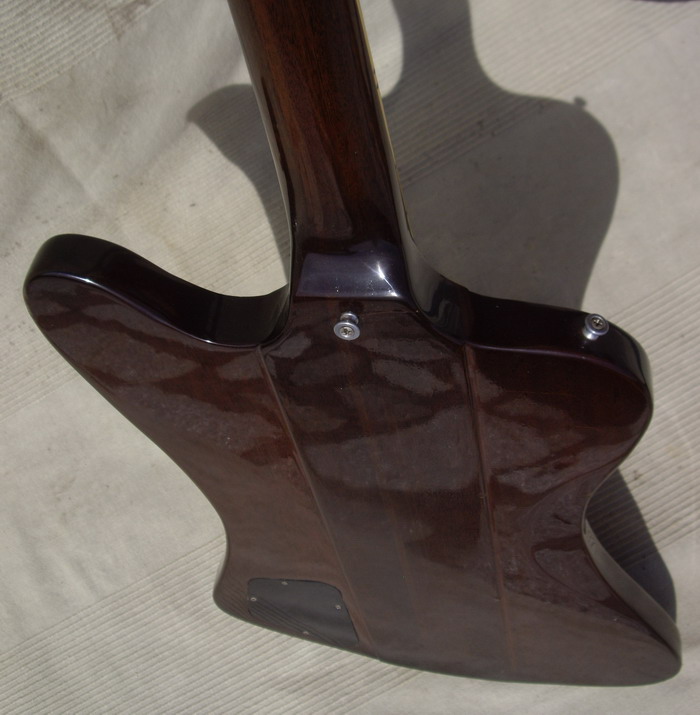
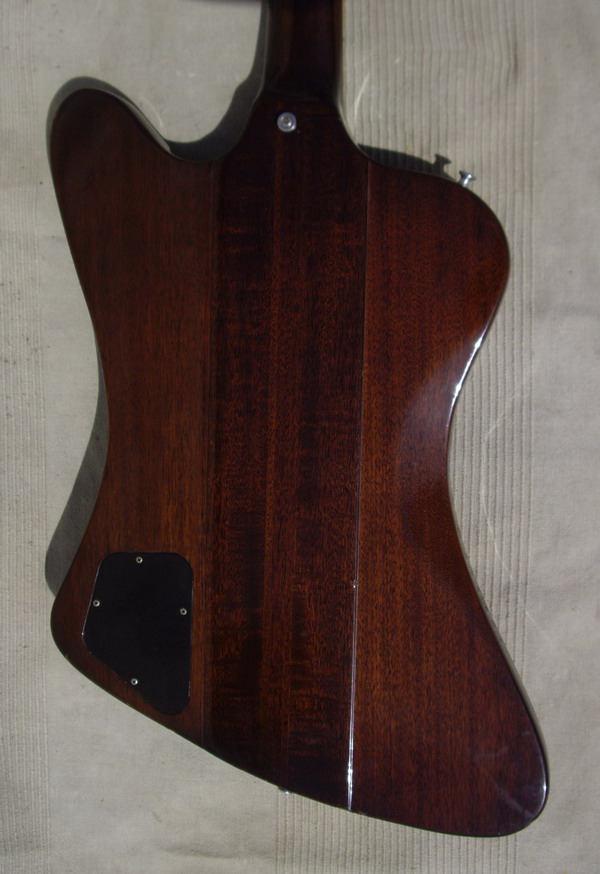

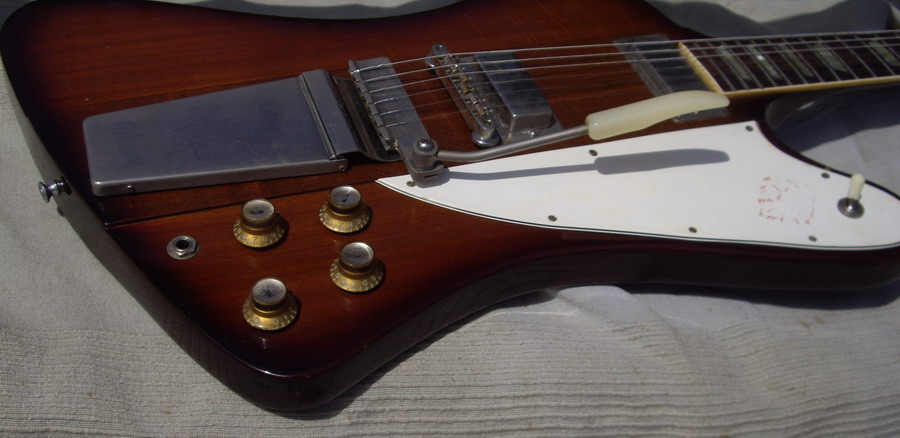
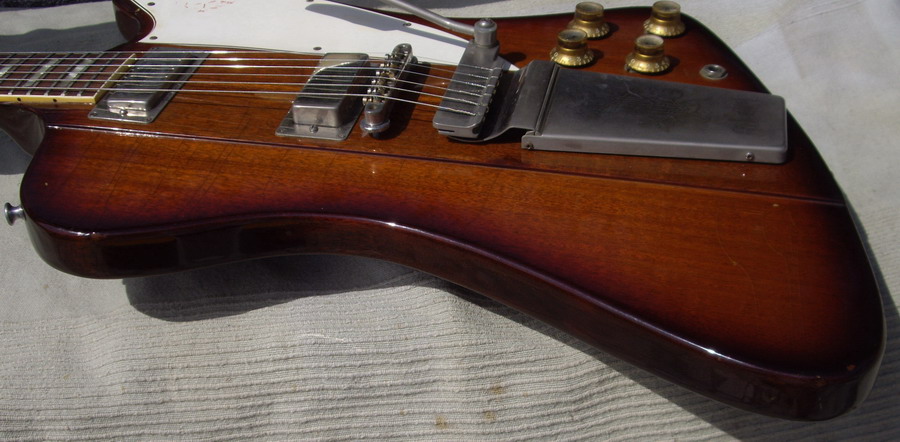
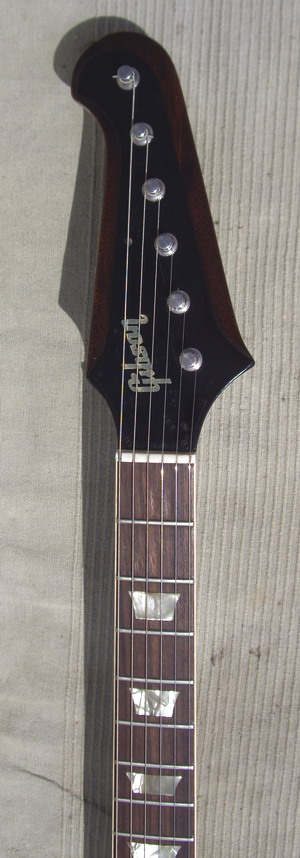

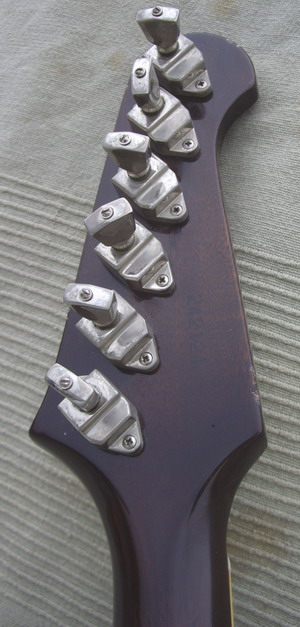
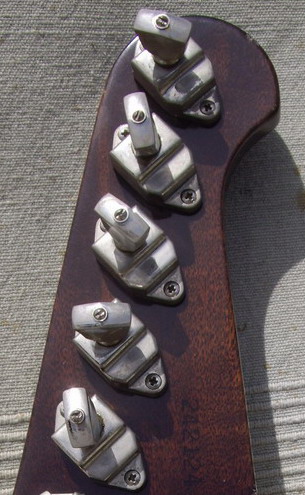
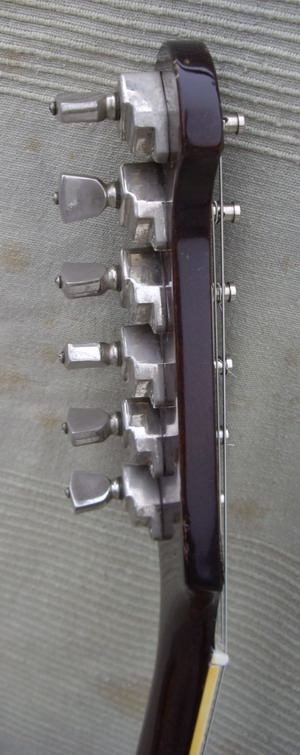
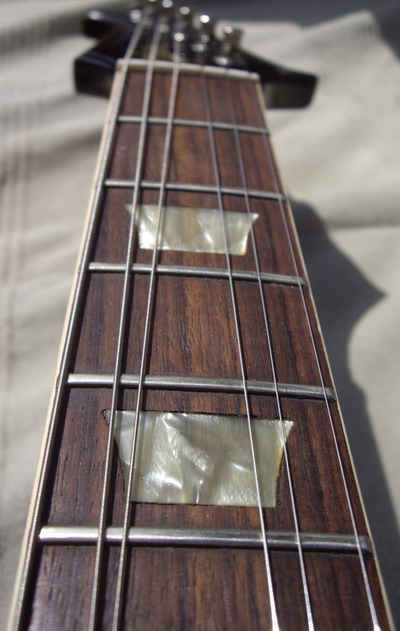


From My Collection
GIBSON 1964 FIREBIRD V Sunburst, Reverse Body, two mini humbuckers, reverse solid mahogany body and neck, 2 mini hum buckers, rwd board with block inlays, Banjo tuners, Vibrola Lyre vibrato, white laminated guard, wide neck, shows minimal wear, OHC EX+ code GI70
Johnny Winter, Keef, Clapton, and Daniel Lanois have all relied on its incredible tone
Gibson’s Firebird models mix their traditional design sense with just the right amount of modernism. Part Explorer, part Les Paul, yet still completely unique, the reverse body Firebird features neck-through construction and the curves of a classic muscle car. The Firebird V model is the ideal blend of fancy appointments and functional electronics, made famous on stage by Johnny Winter.With just a few hundred made, the reverse Firebird V is a rare guitar. It’s rarer still to find an unbroken and unmodified one like this.With two patent number mini-humbuckers and the familiar two volume, two tone control layout, you will be right at home the first time you pick it up. The tone is full and aggressive, and extremely rewarding to play. The 1 11/16″ nut width and “just right” medium neck profile are why 1964 Gibsons remain popular to this day.
Announced in Spring 1963, the original
Firebird series was conceived as an attempt to produce less conventional
electrics likely to appeal to Fender players. Four different models, identified
by odd Roman numerals, were marketed simultaneously...The four models produced
between 1963 and 1965 (a.k.a. the 'reverse' Firebirds) share the same body
specifications and differ only in fretboard style, electronics and
hardware...The original Firebird electrics are primarily characterized by: a
neck-through-body construction; a reverse body shape with extended lower horn; a
reverse peghead with the treble E tuner nearest to the nut; banjo-style tuners
with rearwards buttons; and they are all equipped with mini-humbuckers built
without adjustable polepieces. The early samples are characterized by a 2-piece
full length neck and a convex heel where the neck blends into the body. By late
1963, production models were released with a stronger 9-piece lamination and a
smaller squared-off heel. A painted-on red Firebird emblem was also added on the
white pickguard...For all practical purposes, the Firebird III was the
equivalent of the Special found in the SG/Les Paul family. Compared to the FB I,
the model is characterized by: a bound rosewood fingerboard; two pickups;
individual volume and tone controls for each pickup; a 3-way toggle switch for
pickup selection; a (short) Vibrola tailpiece with flat metal lever. In spite of
a Vibrola tailpiece, the FB III sports the same bar bridge with a pre-set ridge
as the FB I. And because of its stud-anchoring this bridge cannot be replaced by
a fully adjustable Tune-O-Matic bridge...The original Firebird series remained
in production for less than two years between Fall 1963 and mid-65" (A.R.
Duchossoir, Gibson Electrics -- The Classic Years, pp. 198-199).
"New automobile designs out of Detroit had caught McCarty's eye, and he hired
the man responsible, Ray Dietrich, to draw up some guitars. Dietrich sketched a
series of models, and one was chosen. The new guitar bucked tradition with a
treble-side horn longer than the bass horn -- the reverse of conventional style.
The headstock, too, was reversed, with all the tuners on the treble side. To
avoid an awkward tuning procedure, banjo-style tuners went straight out the back
of the headstock. The neck went all the way through the body. The pickups were
unique: mini-humbuckers with no visible polepieces. The new creations were
dubbed Firebirds, and a flock of four models debuted in 1963. A new set of
custom color finishes was introduced just for them" (Walter Carter, Gibson
Guitars: 100 Years of an American Icon, p. 237).
https://www.youtube.com/watch?v=_2e2kC-geMI
https://www.accordo.it/articles/2011/03/50681/gibson-firebird..
http://www.stevemoore.addr.com/hotnews.html
https://www.youtube.com/watch?v=NX4wrwhGDhc
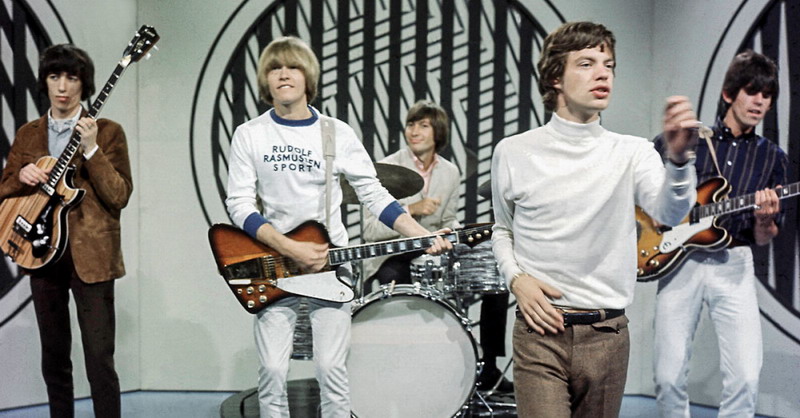


Johnny Winter

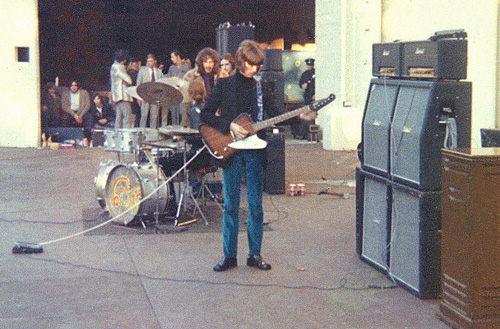
Eric Clapton